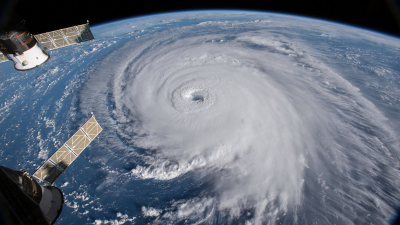In a tearing hurry?

Climate change is making hurricanes wetter, windier and altogether more intense. There is also evidence that it is causing storms to travel more slowly, meaning they can dump more water in one place.
If it were not for the oceans, the planet would be much hotter due to climate change. But in the last 40 years, the ocean has absorbed about 90% of the warming caused by heat-trapping greenhouse gas emissions. Much of this ocean heat is contained near the water’s surface. This additional heat can fuel a storm's intensity and power stronger winds.
Climate change can also boost the amount of rainfall delivered by a storm. Because a warmer atmosphere can also hold more moisture, water vapour builds up until clouds break, sending down heavy rain. During the 2020 Atlantic hurricane season-one of the most active on record - climate change boosted hourly rainfall rates in hurricane-force storms by 8%-11%, according to an April 2022 study in the journal Nature Communications.
The world has already warmed 1.1 degrees Celsius above the pre-industrial average. Scientists at the U.S. National Oceanic and Atmospheric Administration This image obtained from the National Oceanic and Atmospheric Administration (NOAA), shows Hurricane Idalia making landfall in Florida on August 30, 2023. AFP (NOAA) expect that, at 2 degrees Celsius of warming, hurricane wind speeds could increase by up to 10%. NOAA also projects the proportion of hurricanes that reach the most intense levels Category 4 or 5- could rise by about 10% this century. To date, less than a fifth of storms have reached this intensity since 1851.
Picture Credit : Google